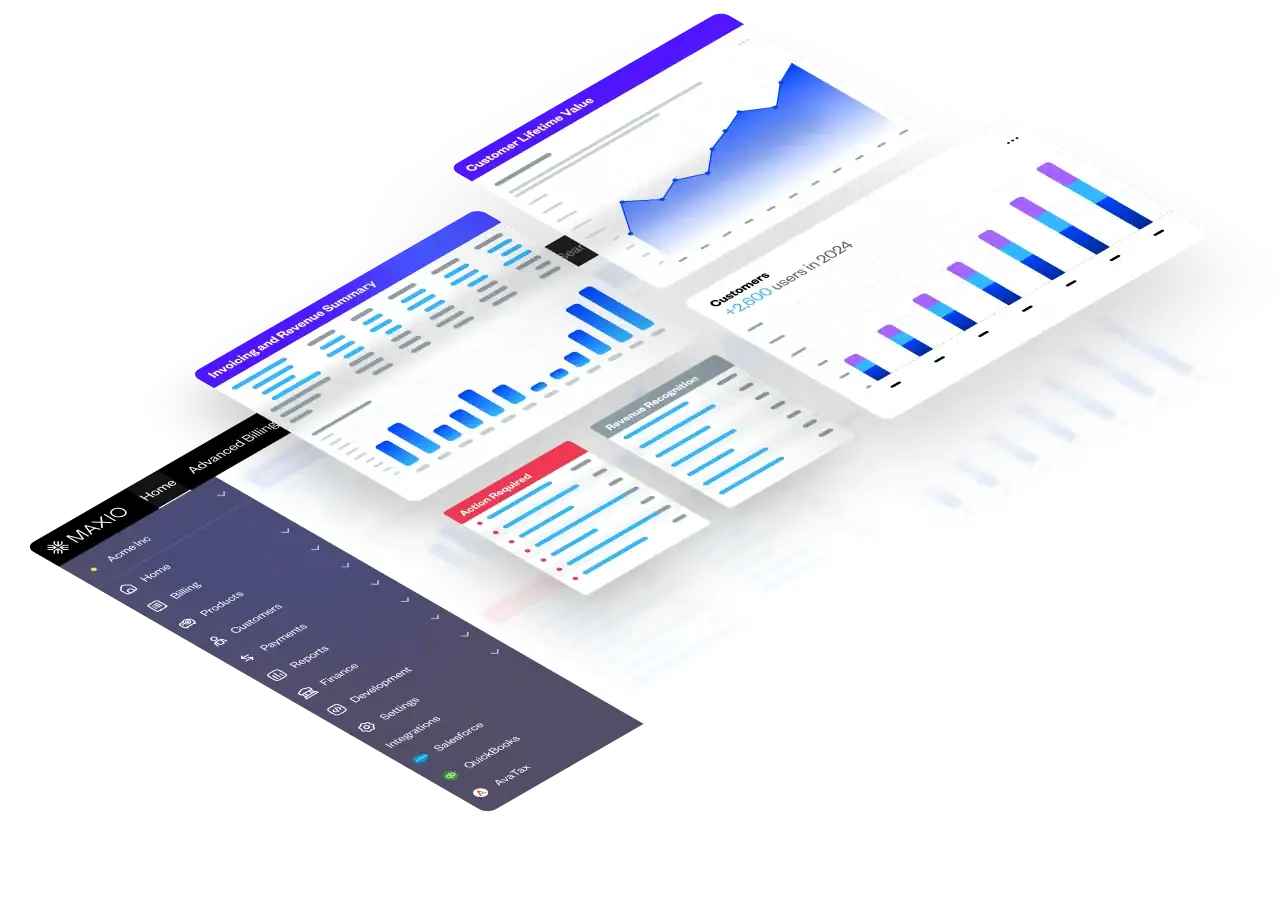SaaS Quick Ratio at a Glance: What It is and How to Calculate It
Achieving a balance between growth and retention in SaaS businesses is critical for companies committed to sustainability. Hyper-focusing on customer acquisition may sound great for growth, but not if you fail to retain them.
To keep a close eye on growth vs retention, many SaaS executives track a figure called SaaS quick ratio, which can easily summarize the health of an organization. But be warned: you shouldn’t confuse SaaS quick ratio with the Acid-Test Ratio, which is also sometimes called “quick ratio.” Whereas the Acid-Test Ratio measures a company’s ability to meet current liabilities, the SaaS quick ratio measures a company’s growth, not its liquidity.
What is SaaS quick ratio?
SaaS quick ratio is a key financial metric that shows net revenue growth by comparing the company’s revenue inflows (like new monthly recurring revenue) against its outflows (like churned MRR). Because SaaS quick ratio considers both positive and negative growth factors, it’s viewed as more reliable and predictive than other ratios. You should expect the quick ratio to fluctuate over time due to seasonality, upgrades, downgrades, and growth stages. This dynamic flow is why it’s important to calculate it regularly.
The SaaS quick ratio works alongside other fundamental metrics of SaaS forecasting, enhancing a company’s ability to spot potential causes for concern in its growth. For example, even if a business experiences high growth rates due to a customer acquisition boom, the SaaS quick ratio will still clearly indicate any potential issues that high churn rates can cause, if present.
Importance of SaaS quick ratio
Building, promoting, selling, and growing a SaaS company is a never-ending project with innumerable tasks, facts, and figures to keep track of. At the heart of these is the company’s revenue growth, and SaaS quick ratio is an easy way to keep tabs on growth for a busy executive.
In addition, if you’re reaching out to venture capitalists for funding, showing a strong quick ratio will go a long way. The SaaS quick ratio pairs nicely alongside other success metrics that matter to investors, assuring them of the current financial health of the company and provide confidence in the company’s future growth.
SaaS quick ratio formula: How to calculate SaaS quick ratio
You can calculate SaaS quick ratio using four essential pieces of data:
- The new revenue from new customers (new MRR)
- The revenue earned from upgrades in subscriptions, services, etc. (expansion MRR)
- The revenue lost from downgrades in subscriptions (contraction MRR)
- The lost MRR from subscription cancellations (churn MRR)
Once you’ve collected those details, you can use the following formula to identify SaaS quick ratio:
New MRR + Expansion MRR / Churn MRR + Contraction MRR = SaaS quick ratio
Let’s look at an example of how to calculate a SaaS quick ratio.
“Great Company Ltd.” has:
- $25,000 in new MRR.
- $9,000 in expansion MRR.
- It lost $6,000 in subscription cancellations.
- It lost $3,000 in current customer downgrades.
Figuring Great Company Ltd.’s SaaS quick ratio would look like this:
$25000 + $9000/ $6000 + $3000 = 3.78
But without context, a number is simply a number. So how do you know if your own SaaS quick ratio is good or bad?
SaaS quick ratio benchmarks: What’s a good SaaS quick ratio?
Simply being able to calculate your SaaS quick ratio doesn’t give you any truly useful information. You need to know how to interpret it, too.
So what’s the SaaS magic number? Well, the widely accepted SaaS quick ratio industry benchmark is 4.0.
If your own quick ratio is at or above this number, you’re doing great. Don’t stop now!
But if your company’s quick ratio hasn’t quite reached this benchmark—like Great Company Ltd., as we discussed above—you’ll need to find out what’s causing so many of your subscribers to downgrade and/or churn. This can be a challenge for SaaS startups, but an important one to overcome to achieve sustainable growth.
Four ways to improve a low quick ratio
Clearly, there’s a direct connection between the quick ratio and the financial health of a SaaS company. A high quick ratio indicates greater efficiency in MRR growth. Here are four ways to help raise your quick ratio:
1. Enhance customer retention
If a company has spent the time and dollars to acquire a customer, it’s in the best interest to keep them onboard. In the SaaS business model, initiatives like improving customer service, offering customer loyalty programs, and focusing on customer satisfaction are powerful ways to boost customer retention and achieve a low churn rate.
2. Increase customer acquisition
With so much competition in the industry, SaaS companies need an aggressive customer acquisition strategy. Targeted marketing campaigns, promotional offers, and building a strong online presence are proven ways to attract new customers. In addition, these actions can shorten the sales cycle. Marketing should closely monitor campaign metrics like conversion rate optimization (CRO) to ensure their initiatives are helping increase customer acquisition.
3. Reduce churn rate
Closely and frequently monitoring your churn rate is crucial for SaaS company health. A high churn rate can be a key factor in a low SaaS quick ratio and may negatively affect the overall business in the short term. Losing customers prematurely also decreases the customer lifetime value (LTV). A strategy like conducting exit surveys can help you understand the reasons for churn, enabling you to take measures that will prevent your existing and future customers from deciding to leave, too.
4. Boost upselling and cross-selling
There are plenty of ways to increase a customer’s worth that can add dollars to your bottom line. Implementing a range of upselling and cross-selling techniques can help improve the SaaS quick ratio by raising your expansion MRR. Target the right customers, offer relevant products and services, and time the upsell/cross-sell opportunity right. These strategies can net significant increases in MRR and strengthen your relationship with customers to boot.
Monitor your SaaS quick ratio in real time with Maxio
Because SaaS quick ratio is such a telling metric, it’s helpful to keep a close eye on it. And there’s no better, or easier, way to do that than by using a financial operations platform like Maxio.
Our innovative solution assists SaaS businesses in pinpointing vital financial insights. Using a dashboard to keep track of SaaS metrics in real time, you’ll be better positioned to forecast and manage the financial health of your company with data-driven, impactful growth strategies.
Our mission is to equip B2B SaaS businesses with the tools they need to achieve flexible, sustainable growth. Set up a demo today, and you’ll see how Maxio can help you track your SaaS quick ratio and improve MRR.
Your Plug-and-Play SaaS Metrics Dashboard
In this template, you’ll find a comprehensive set of pre-built SaaS metrics (that you can trust) to wow investors and make key business decisions with confidence.
Chart your path to profitability with metrics like:
- Subscription Momentum (ARR, customer count, average ARR)
- Churn & Retention (churn rate, renewal rate, net revenue retention)
- Customer Lifetime Value (CLV)

